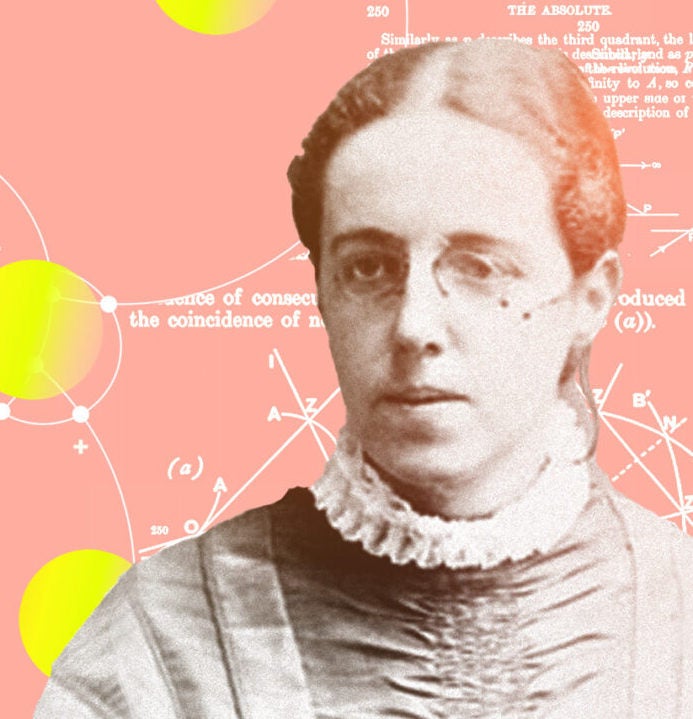
Charlotte’s Web
Our name “Charlotte’s Web” is a double entendre. Many people will be familiar with the children’s book “Charlotte’s Web” in which a spider named Charlotte saves her friend, a piglet, from being sent to the slaughter house by singing his praises in her web. Our group is really named after the pioneering mathematician Charlotte Angas Scott (1858-1931) who is famous for her work in algebraic geometry and for her influence on mathematics education for women in Cambridge and in the USA. We are part of the web of women mathematicians spun by Charlotte Angas Scott, hence our name.
Cambridge days
Scott studied at Hitchin (now Girton) College, a womens’ college in Cambridge, England which is now a college of the University of Cambridge. The university only awarded degrees to men, so she had to get special permission to sit the Mathematical Tripos (the undergraduate mathematics degree). She placed eighth, but at the public reading of the rankings she was removed from the list because of her gender. The next year, women could take the Mathematical Tripos and have their results read publically, although separately. It was not until 1948 that women could receive a degree from Cambridge.
Work
Scott studied algebraic curves with Arthur Cayley in Cambridge and, unable to receive a degree from Cambridge, was awarded a doctorate from the University of London. She wrote a textbook on analytic geometry. English-language textbook writers were known in international mathematical community for getting confused between proof and example, but Scott’s textbook emphasised mathematical rigor which became customary in the twentieth century.
Move to America
She moved to Pennsylvania, USA in 1885 to become a founding faculty member of Bryn Mawr college, the first American womens’ college to offer PhDs. She supervised three of the nine women who received their mathematics PhDs in the US in the nineteenth century.
She contributed significantly to America’s mathematical reputation in the world, serving on the first Council of the American Mathematical Society and authoring the first paper to be published in Europe by a US mathematician.